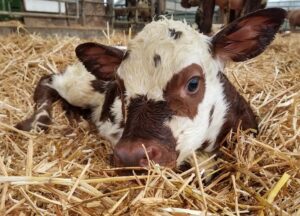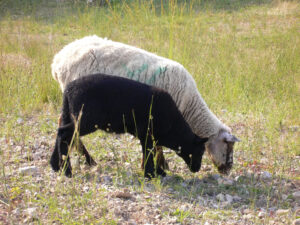
HoloRuminant will expand our understanding of ruminant-associated microbiomes by using an integrated holo-omics approach to fill knowledge gaps and develop tools for their interpretation. The multiple microbiomes within the individual host and their interplay with the host animal will be explored from birth to adulthood, including changes during challenging periods. The data produced will encompass not-yet-cultured microbes and often neglected microbial populations in key ruminant microbiomes, i.e. eukaryotes and viruses.
- The project will focus on cattle and small ruminant holobionts on which the relationship of microbiomes from different body sites will be evaluated. Microbial ecosystems known to affect ruminant phenotypes, i.e. the gastrointestinal tract (GIT), in particular the rumen and faeces as a proxy of the distal intestine, upper respiratory tract, milk and skin, will be monitored during critical life periods and during disease outbreaks together with KPIs and parameters related to animal health and welfare.
- The project will use a holistic approach based on multi-omics techniques to comprehensively characterise microbiomes comprising prokaryotes, eukaryotes and viruses. Microbe-derived metabolites in the plasma of the host animal will be investigated by metabolomics approaches for assessing the systemic effect of microbiomes and for the discovery of markers associated with KPIs.

© INRAE / MEURET Michel - Several studies will be carried out at multiple geographical locations representing diverse production systems and diets and using both similar and different breeds and species (cattle, sheep and goats). This will allow a better assessment of management related variability. The wealth of data collected in the studies proposed by HoloRuminant, where multiple microbiomes will be characterised, will allow a far superior assessment of microbial variability in the ruminant holobiont than those accomplished in the past.
- The holo-omic approach used in this project will combine host phenotypic/genotypic data with multi-level information on ruminant-associated microbiomes by using metagenomics, metatranscriptomics, metaproteomics and metabolomics. These data will provide information on both host and their microbiomes’ behaviour, functions and interactions (answering to the who, what, where, and when questions), while also providing information on the microbial dynamics throughout life and on the heritability of microbes.
- Ruminant production in Europe encompasses a diversified array of management practices, climatic conditions and diets that is taken into consideration in HoloRuminant’s studies. The aim is to provide solutions that can be applicable to a large variety of production systems in Europe and worldwide.
- HoloRuminant will compare existing management practices and evaluate novel ones, focusing on early life, as there are published indications1 that this is the most receptive time window for the modulation of host-associated microbiomes. The project will test innovative ways for modulating the GIT microbiomes for reducing methane emissions and improving animal health and welfare.
